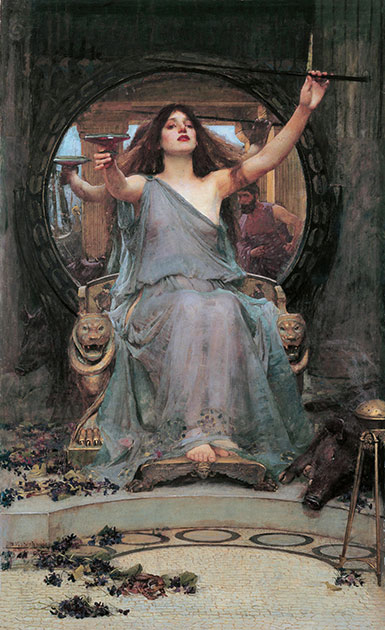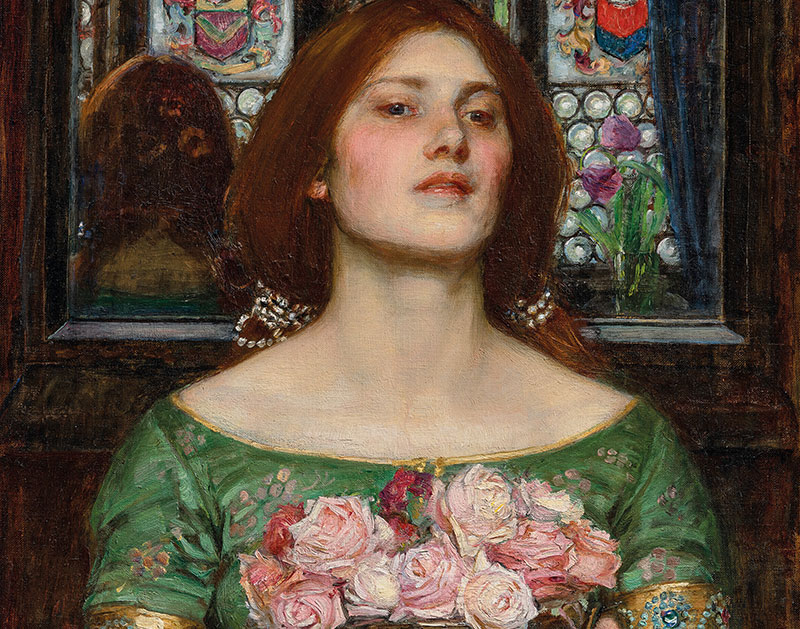-

Circe Offering the Cup to Odysseus (1891)
Waterhouse’s “Circe Offering the Cup to Odysseus” depicts the sorceress Circe offering a magical potion to the hero Odysseus.
-
-2.jpg)
Juliet (1898)
John William Waterhouse’s 1898 painting “Juliet” portrays the innocence and melancholy of Shakespeare’s heroine.
-

The Soul of the Rose (1908)
“The Soul of the Rose” is an oil painting created by John William Waterhouse in 1908. It portrays a red-haired woman deeply inhaling the scent of a rose in a garden. The inspiration for the painting comes from Alfred Lord Tennyson’s poem “Maud,” specifically the line “And the soul of the rose went into my […]
-

Gather Ye Rosebuds While Ye May: Waterhouse’s Vanitas for the Edwardian Age
John William Waterhouse’s 1908 masterpiece Gather Ye Rosebuds While Ye May (118x157cm, oil on canvas) reimagines Robert Herrick’s 17th-century poem To the Virgins through an Edwardian lens.
